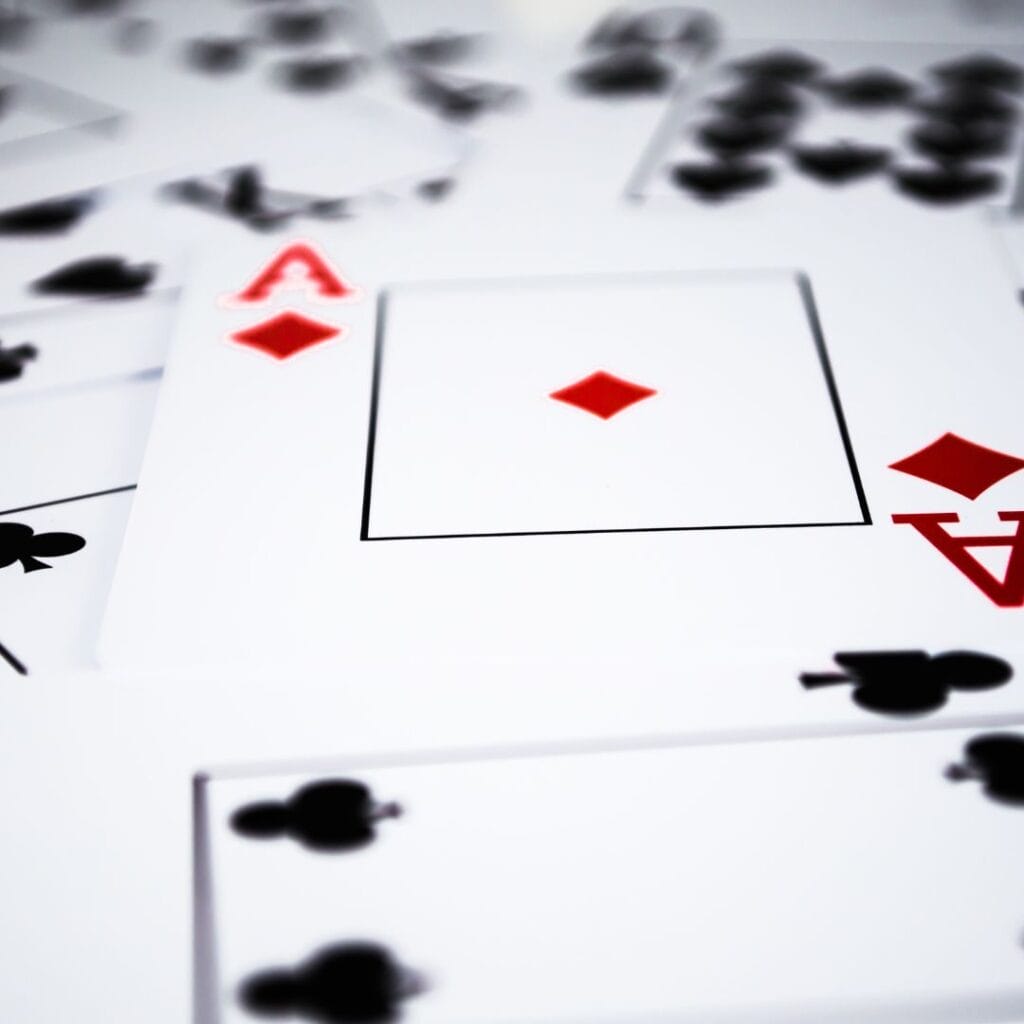
The online poker scene is dominated by games like Texas Hold’em and Omaha. But there are many other fascinating variants out there which are great fun to play. Chinese poker is one of them.
It might seem complex at first, as it doesn’t look like any of the more traditional forms of poker, but it’s not as difficult as you might imagine — as you’re about to discover in this guide to the game’s rules and strategy.
What Is Chinese Poker?
Unlike most poker variants, Chinese poker doesn’t just rely on making a single five-card hand. Instead, each player is dealt 13 cards and must make three distinct hands, two of which contain five cards, and another just three.
Points are earned in a variety ways, based on the contents of these hands. It’s usually agreed beforehand that points will have monetary value. So, when you’ve finished playing, players with negative points values will pay those with positive scores accordingly.
As one of the most unique poker games on the scene, Chinese poker really is a great way to freshen up your home game.
Chinese Poker Rules

As mentioned, every player receives 13 cards, meaning that the game cannot be played by more than four players. Traditionally, cards are dealt face-down, though an “open face” variation is often played in which they’re all placed face-up.
Upon receiving your cards, you’ll need to create three hands, placing them on the table in three positions: front, middle, and back. Your front hand will always be made up of three cards, while the others must be five-card hands.
Based on the traditional poker hand rankings, the strongest of the two five-card hands must be played as the back hand. Failure to play Chinese poker hands in the correct order is a foul, which incurs a 3-point deduction.
Once all players have fixed their three hands, the second phase of the Chinese poker game begins. Hands are revealed, and the points tallies are calculated based on relative hand strength.
If you’re playing heads up, scoring is easy since you’re just comparing two hands. However, with three or four players, you must tally your hands against all the other players’ hands individually. You then add the points together to produce a total score.
There are many ways to score in a Chinese game, but two methods are the most common.
Scoring: 1 to 6 Rule
Under this system, a score of 2-1 means a 1-point gain for the winner and a 1-point loss for the loser. However, winning all three hands, known as a “scoop,” is rewarded with 3 bonus points while your opponent loses an extra 3 points. So, a result of 3-0 means 6 points for you and -6 for the opponent.
Scoring: 2 to 4 Rule
Using this scoring system only awards 4 points for a scoop, with the opponent deducted 4. However, a 2-1 score results in a 2-point gain for the winner and a 2-point loss for the losing player.
Regardless of the scoring system used, it’s a tie if all players have a hand of equal value. In such cases, no points are awarded for that hand.
Rule Variation

Those are the basic rules of Chinese poker. But as with many card games, you’ll find all kinds of house rules applied. Here are some of the most popular variations.
Royalties
In addition to the basic scoring system, bonus points can be gained for achieving certain feats, usually referred to as “royalties.”
The first kind of royalties is the hand bonus, which can be further categorised into front, middle, and back:
- Front: Earn an extra 3 points whenever you make three of a kind.
- Middle: Straight flushes automatically score an additional 4 points, with 3 for four of a kind and 2 for a full house.
- Back: Gain 3 bonus points for a straight flush, and 2 for four of a kind.
The second kind of royalty is a 13-card bonus. Essentially, if your combined 13-card hand produces natural combinations, extra points may also be awarded. Scoring varies in accordance with house rules, but the most common values can be seen here:
- The Dragon (36 points): A 13-card straight.
- All Broadway (32 points): Holding all 12 court cards.
- 3 Straight Flushes (24 points): A distinct straight flush in each hand.
- 3 Quads (20 points): Three four-of-a-kind hands with a spare card.
- All Low/All High (12 points): Every card is 8 or better, or 8 or lower.
- Full Colored (10 points): All 13 cards are either red or black.
- Four Triples (8 points): Four separate three-of-a-kind hands with a spare card.
- Six Pairs (6 points): Six pairs, where a four-of-a-kind counts as two unique pairs.
- Three Straights (4 points): Two five-card straights and a three-card straight.
- Three Flushes (3 points): As above, with flushes rather than straights.
Dragons are just one of many popular Chinese lucky charms used when gambling. It’s no surprise, then, to see the biggest possible bonus bearing this name.
Surrender
You may not fold your hand in Chinese, regardless of how bad it is. However, some variations incorporate a surrender rule. If you opt to surrender, you won’t need to form your cards into three hands. Doing so usually costs you 3 points against all players.
Open Face Chinese
A common variant is for all cards to be dealt face up, with the hand arrangements carried out in the open. Players receive their first five cards together and must fix them into position on the table. Once set, they cannot be moved.
The remaining cards are then drawn one at a time and must be placed into any of the hands. Again, once set into place, they cannot be moved.
It’s harder to create strong hands in Open Face Chinese poker as you have no idea what cards you’ll draw. As such, fouling is quite common.
The game is quite rare on the internet. You certainly won’t find any for Open Face Chinese poker.
Fantasy Land
A further variation on Open Face Chinese poker is the Fantasy Land bonus. If you make a pair of queens or better in your front hand, you can enter Fantasy Land during the next game. This allows you to receive all 13 cards at once, and you can assemble your hand after seeing what your opponents have already made.
Pineapple
This is a variation of Open Face Chinese poker. The initial five cards are dealt in the same way, but instead of drawing one card at a time, you draw three. Two of these are placed on the table, with one discarded.
Play Poker at Borgata Online
Chinese poker really is a great way to spice up your home games. But it’s not the only fun poker variation if you fancy taking a break from Hold’em. You’ll find all sorts of engaging poker games when you register to play at Borgata Online.
